Kyoto
2025.06.22
[Kyoto] Experience Zazen Meditation, Kyoto Matcha Tea, and a Zen Garden Tour at Daisen-in Temple!

If you’re searching for an authentic Zen experience in Kyoto, Daisen-in Temple is one of the most tourist-friendly places to try zazen meditation in the ancient capital of Japan. Famous for its traditional Japanese architecture and beautifully preserved Japanese garden, Daisen-in offers visitors a chance to discover the art of meditation while exploring one of the country’s national treasures. Take the time to slow down, clear your mind, and experience true Zen in a deeply historical setting—an experience unique to Kyoto!
Table of Contents
What to See at Daisen-in Temple: Meditation, Zen Garden and Historical Sights
 Located within the grounds of Daitoku-ji Temple, a Rinzai Zen Buddhist complex made up of 24 sub-temples, Daisen-in is a top location in Kyoto for both beginners and seasoned practitioners. Here, visitors can experience mind-cleansing zazen meditation, enjoy a warm cup of Kyoto matcha tea with a monk, and join an English-guided tour (*advanced reservation for the zazen course is required) of the temple’s world-class karesansui dry landscape garden, which beautifully embodies Zen Buddhist philosophy.
Located within the grounds of Daitoku-ji Temple, a Rinzai Zen Buddhist complex made up of 24 sub-temples, Daisen-in is a top location in Kyoto for both beginners and seasoned practitioners. Here, visitors can experience mind-cleansing zazen meditation, enjoy a warm cup of Kyoto matcha tea with a monk, and join an English-guided tour (*advanced reservation for the zazen course is required) of the temple’s world-class karesansui dry landscape garden, which beautifully embodies Zen Buddhist philosophy.📒Note: Guided tours are not available for regular temple visitors.
 Founded in 1509, the hojo (main hall) of Daisen-in is believed to have been built in 1513 and is now designated as a national treasure. The temple is also home to Japan’s oldest genkan (entryway) and the country’s oldest tokonoma, an alcove traditionally used to display art and treasures and serve as a focal point for meditation. Notably, the tea house in the sho-in no ma (study room) was even used for tea ceremonies by the legendary warlord Toyotomi Hideyoshi and the renowned tea master Sen no Rikyu. With its rich history, stunning Zen garden, and unique cultural experiences, Daisen-in Temple offers a truly unforgettable glimpse into Kyoto’s spiritual heritage.
Founded in 1509, the hojo (main hall) of Daisen-in is believed to have been built in 1513 and is now designated as a national treasure. The temple is also home to Japan’s oldest genkan (entryway) and the country’s oldest tokonoma, an alcove traditionally used to display art and treasures and serve as a focal point for meditation. Notably, the tea house in the sho-in no ma (study room) was even used for tea ceremonies by the legendary warlord Toyotomi Hideyoshi and the renowned tea master Sen no Rikyu. With its rich history, stunning Zen garden, and unique cultural experiences, Daisen-in Temple offers a truly unforgettable glimpse into Kyoto’s spiritual heritage.
Zazen Meditation Courses at Daisen-in Temple
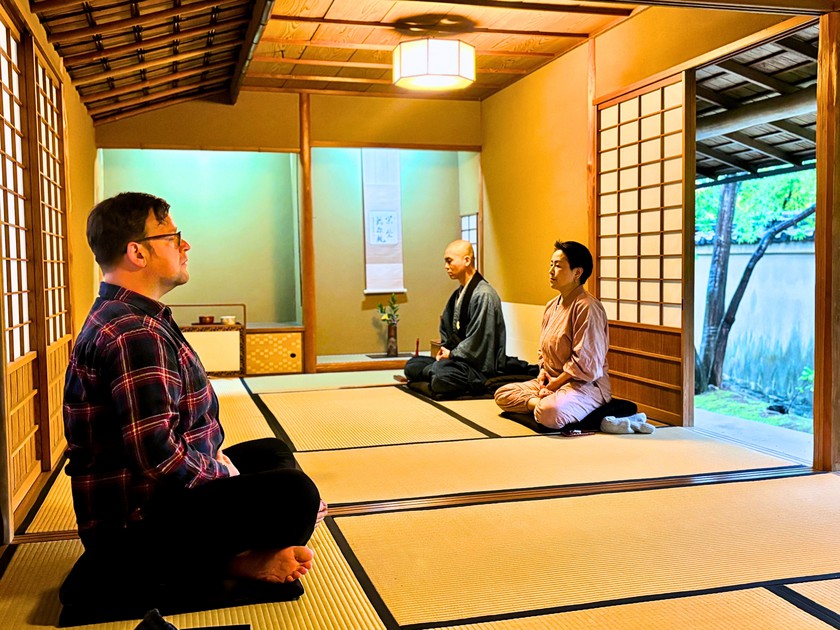 One of the main highlights of Daisen-in is the rare opportunity for visitors to practice authentic zazen (seated Zen meditation) in a serene and historic setting. Zazen courses here are available in several types to suit different levels of interest and experience. For those seeking a more in-depth experience, the private Standard Course (¥5,000 per person, for groups of seven or more) and Premium Course (¥12,000 per person, for groups of two to six) are available.
One of the main highlights of Daisen-in is the rare opportunity for visitors to practice authentic zazen (seated Zen meditation) in a serene and historic setting. Zazen courses here are available in several types to suit different levels of interest and experience. For those seeking a more in-depth experience, the private Standard Course (¥5,000 per person, for groups of seven or more) and Premium Course (¥12,000 per person, for groups of two to six) are available.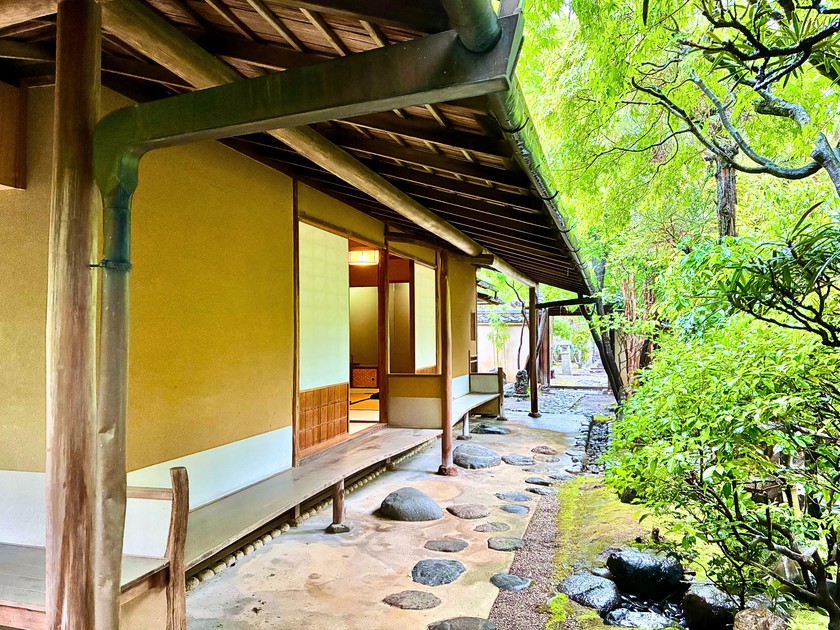 For instance, the 90-minute Zazen Meditation Premium Course begins with participants being guided into a private teahouse that is usually not open to the public. After removing your shoes and stepping inside, you’ll also take off your socks. An English-language guide will then demonstrate how to sit properly for the meditation. There’s no need to worry if you can’t sit in the lotus position—you’re welcome to sit with your legs crossed, and chairs are available for those who find it difficult to sit cross-legged for extended periods.
For instance, the 90-minute Zazen Meditation Premium Course begins with participants being guided into a private teahouse that is usually not open to the public. After removing your shoes and stepping inside, you’ll also take off your socks. An English-language guide will then demonstrate how to sit properly for the meditation. There’s no need to worry if you can’t sit in the lotus position—you’re welcome to sit with your legs crossed, and chairs are available for those who find it difficult to sit cross-legged for extended periods.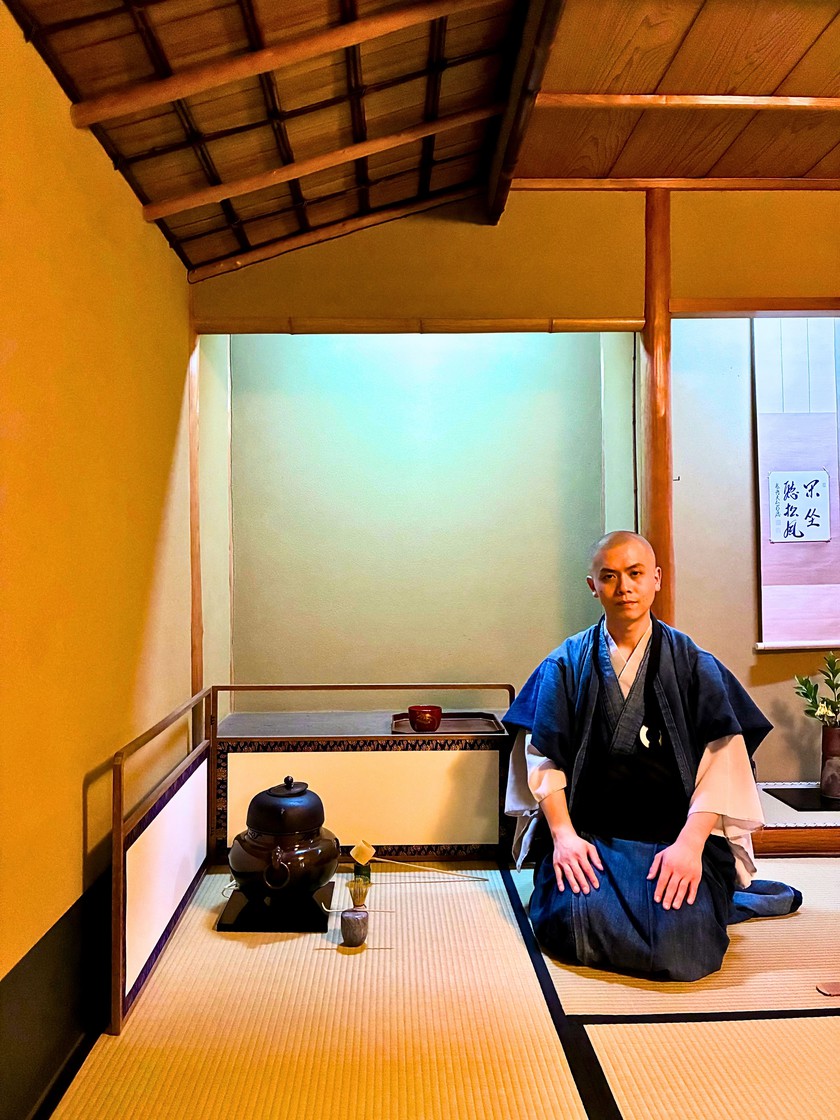 Once everyone is seated, the monk signals the start of meditation with a set of hyoshigi (a traditional Japanese percussion instrument made of two pieces of hardwood) and a bell. As the session begins, you can start to relax your mind by focusing on your breathing. There are no specific goals or expectations in zazen; instead, the main purpose is to simply observe what is happening both inside and outside your body as you slow down. This includes noticing any thoughts or emotions that arise, as well as any sounds or sights you may encounter during the meditation.
Once everyone is seated, the monk signals the start of meditation with a set of hyoshigi (a traditional Japanese percussion instrument made of two pieces of hardwood) and a bell. As the session begins, you can start to relax your mind by focusing on your breathing. There are no specific goals or expectations in zazen; instead, the main purpose is to simply observe what is happening both inside and outside your body as you slow down. This includes noticing any thoughts or emotions that arise, as well as any sounds or sights you may encounter during the meditation.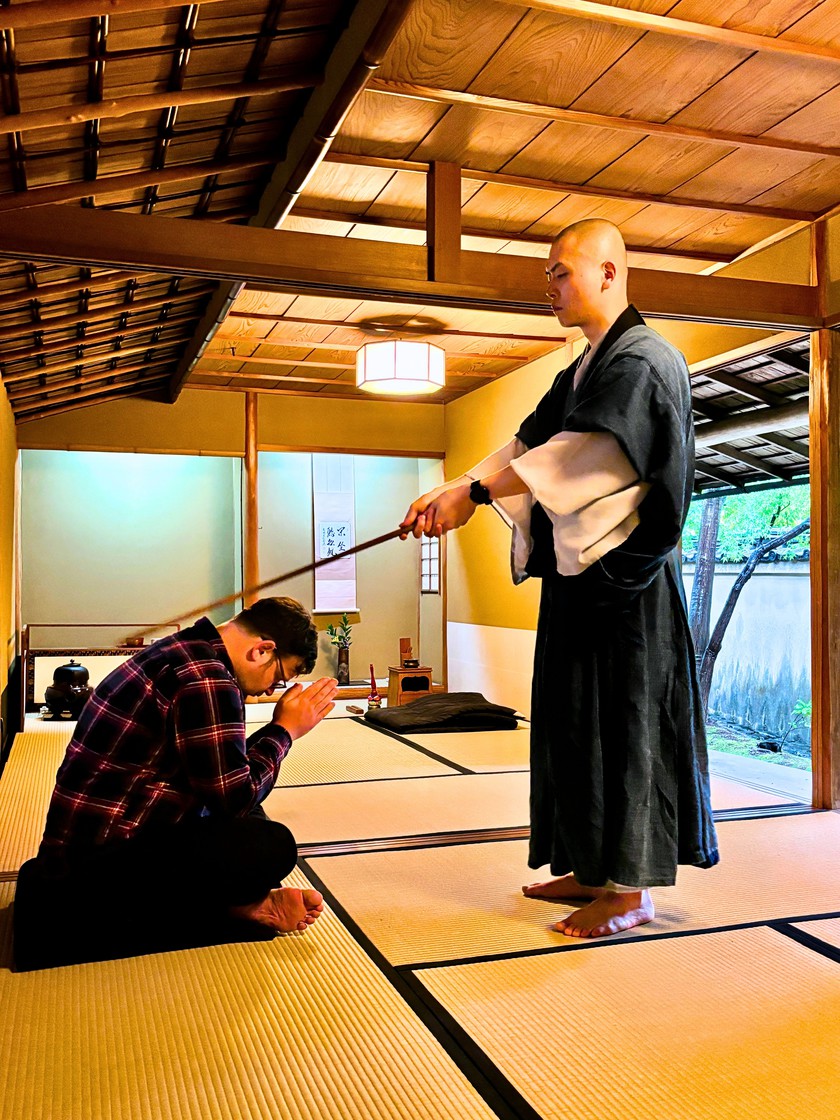 Maintaining good posture with short inhales and long exhales is key to staying focused and alert during meditation. Counting each breath can also help clear your mind of the thoughts that naturally arise as you settle in. Allowing your mind to take a break from the busyness of daily life and simply observing your thoughts—without getting caught up in them—can be a deeply rewarding experience.
Maintaining good posture with short inhales and long exhales is key to staying focused and alert during meditation. Counting each breath can also help clear your mind of the thoughts that naturally arise as you settle in. Allowing your mind to take a break from the busyness of daily life and simply observing your thoughts—without getting caught up in them—can be a deeply rewarding experience.During zazen meditation, if you find your concentration wavering or have trouble staying focused on your breathing, you can place your hands together in the gassho prayer position. This gesture signals to the monk that you would like to be tapped on the back with his stick. When the monk stands in front of you, keep your hands in gassho and bow your head. The monk will gently tap each shoulder twice, followed by a bow. This is not a punishment or meant to cause pain—it simply serves as a gentle stimulus to help you refocus your concentration.
Enjoy Traditional Kyoto Matcha Tea and Japanese Karensansui Dry Garden
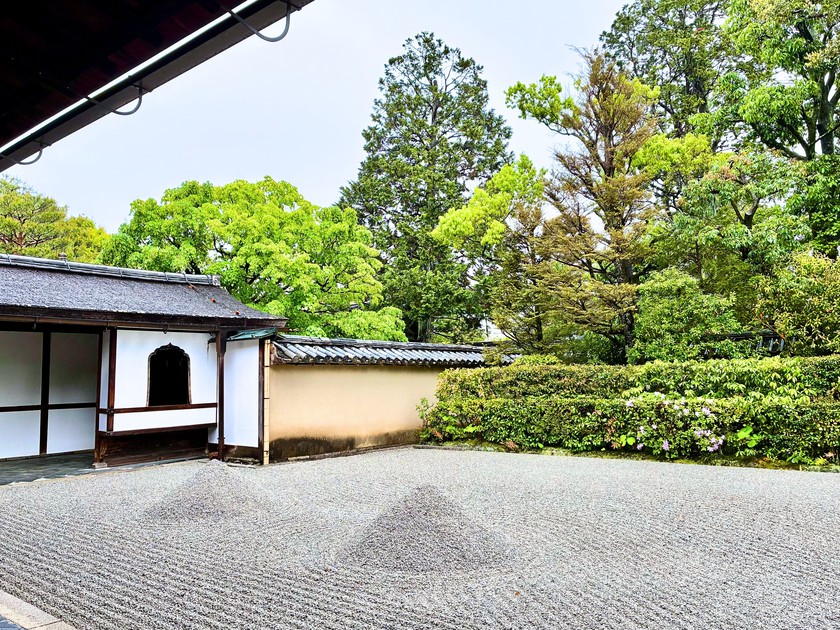 At the end of your session, the monk will ring a bell and clap the hyoshigi sticks together once more as a signal to finish. After bowing, take your time standing up while the monk prepares traditional Kyoto matcha tea for you in the tea house. This is a wonderful opportunity to chat with the monk about Zen Buddhism or your zazen experience. When the tea is ready, it will be served in a traditional Japanese chawan tea bowl, accompanied by a small sweet to enjoy before drinking.
At the end of your session, the monk will ring a bell and clap the hyoshigi sticks together once more as a signal to finish. After bowing, take your time standing up while the monk prepares traditional Kyoto matcha tea for you in the tea house. This is a wonderful opportunity to chat with the monk about Zen Buddhism or your zazen experience. When the tea is ready, it will be served in a traditional Japanese chawan tea bowl, accompanied by a small sweet to enjoy before drinking. Once you’ve finished your tea, the English-language guide will lead you on a tour of the Muromachi period karesansui dry landscape garden and the hojo abbot’s quarters building, both created by the monk Daisho Kokushi in 1509.
Once you’ve finished your tea, the English-language guide will lead you on a tour of the Muromachi period karesansui dry landscape garden and the hojo abbot’s quarters building, both created by the monk Daisho Kokushi in 1509.
Deepen Your Understanding of Zen in the Garden
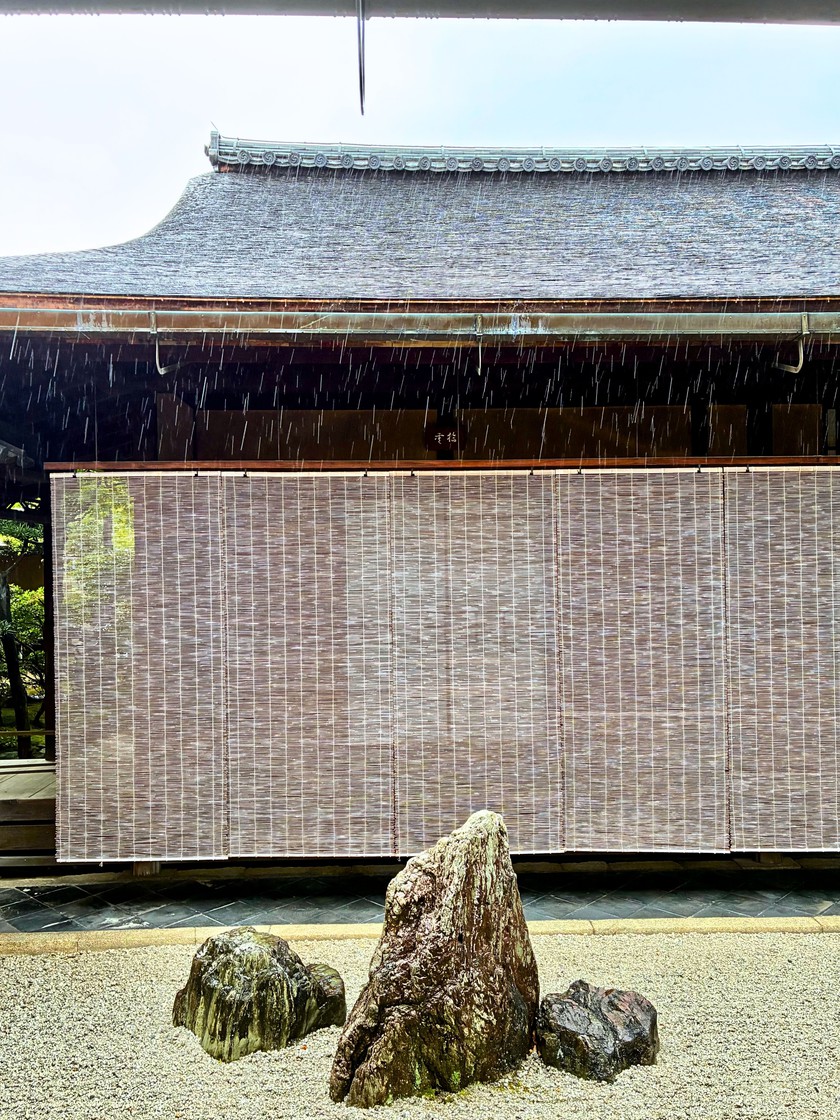 The garden in Daisen-in is a living expression of Zen philosophy, symbolizing the journey of the human spirit through life—like a ship seeking peace and tranquility amid the vastness of time and the universe. As you wander through the grounds, look out for unique features such as Buddha’s foot and a tsukubai basin—a traditional stone washbasin for ritual purification that “never dries out”—added by Sen no Rikyu for purification before the tea ceremony. Your guide will share the deeper meanings and metaphors woven into the garden’s design, reflecting both nature and the path of human life. Perhaps the most enjoyable part is discovering how your own story might fit into this landscape, which has inspired meditating monks, legendary warlords, and tea masters for over 500 years.
The garden in Daisen-in is a living expression of Zen philosophy, symbolizing the journey of the human spirit through life—like a ship seeking peace and tranquility amid the vastness of time and the universe. As you wander through the grounds, look out for unique features such as Buddha’s foot and a tsukubai basin—a traditional stone washbasin for ritual purification that “never dries out”—added by Sen no Rikyu for purification before the tea ceremony. Your guide will share the deeper meanings and metaphors woven into the garden’s design, reflecting both nature and the path of human life. Perhaps the most enjoyable part is discovering how your own story might fit into this landscape, which has inspired meditating monks, legendary warlords, and tea masters for over 500 years.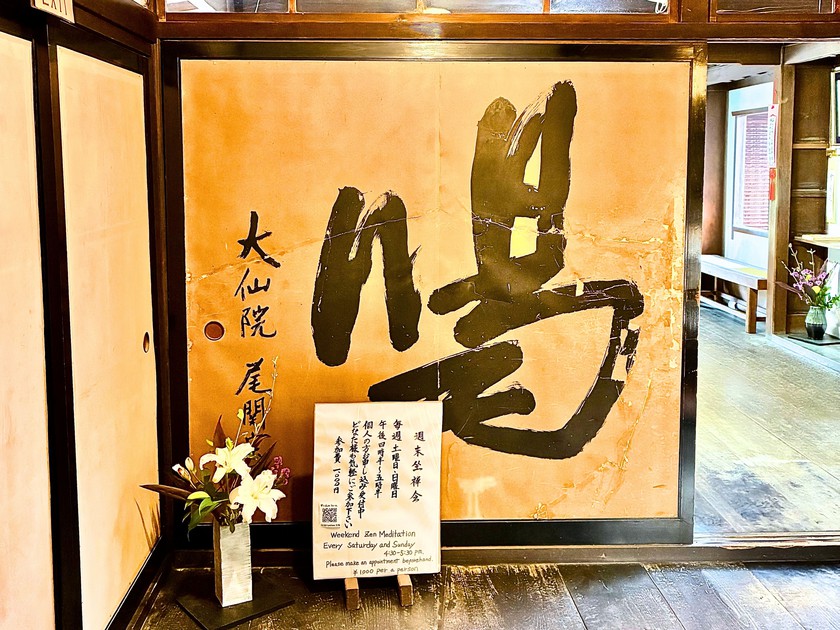
Daisen-in Temple Opening Hours & Ticket Fees
Daisen-in is open year-round from 9:00 am to 4:30 pm. However, visiting hours may occasionally change due to unforeseen circumstances, so it’s a good idea to check the calendar on their website before your visit.Daisen-in charges an admission fee of ¥500 for adults and ¥300 for children. For an additional ¥400, visitors can enjoy a set of matcha tea and a traditional sweet. Guidebooks are also available in English, French, Spanish, Korean, and German for ¥500 each.
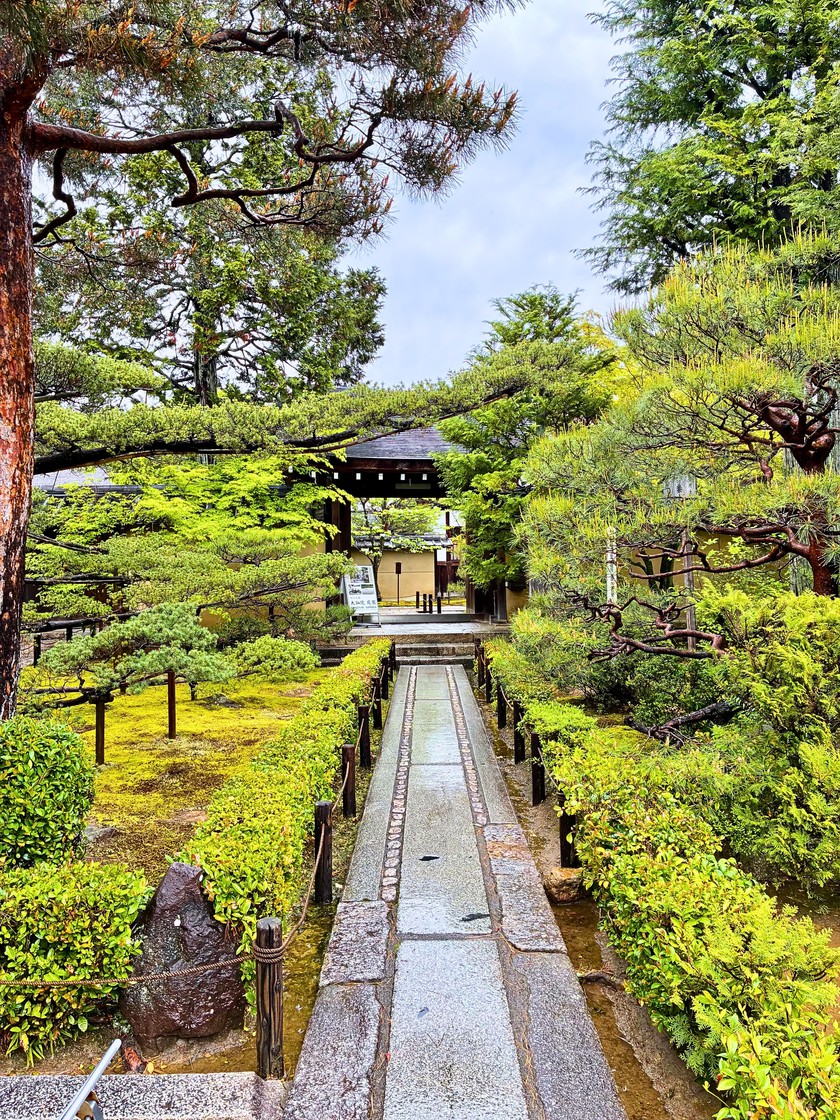
How to Get to Daisen-in Temple from HOTEL TAVINOS Kyoto
The easiest way to get to Daisen-in Temple from HOTEL TAVINOS Kyoto is by taking the Kyoto City Bus, which offers a direct route with no transfers required.● [By bus]:Take the Kyoto City Bus Route 205 from the Kawaramachi-gojo Bus Stop, which is conveniently located right next to the hotel. The ride to Daitokuji-mae Bus Stop takes about 30 minutes, and from there, Daisen-in is just a 8-minute walk away.
Daisen-in Temple
Address: 54-1 Murasakino, Daitokujicho, Kita Ward, Kyoto
Hours: 09:00 am – 04:30 pm
Closed: open all year round
Access: around 8-minute walk from Kyoto City Bus Daitokuji-mae Bus Stop
Website: https://daisen-in.net
